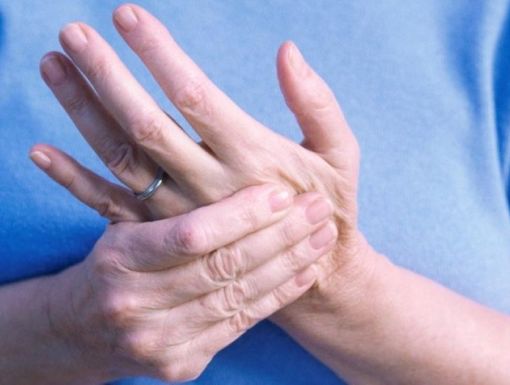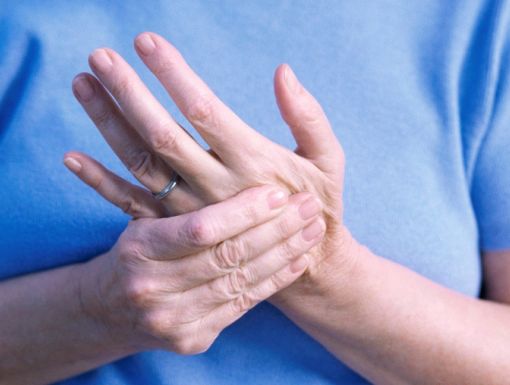
Gout Symptoms and Causes You Need to Know
More than 3 million Americans experience gout, a type of arthritis caused by too much uric acid buildup in your body. Gout causes swelling, redness, heat and significant pain in the affected joint. The pain can at times be draining.
While gout primarily affects joints in the feet particularly the big toe it also can attack other joints, including those in your fingers and wrist. When it does, it can be difficult to use the damaged finger. Episodes of gout can come and go. While painful, the flareups usually decrease within a few days but can last a week. It can also mimic an infection.
Some people have only one gout attack throughout life, while others experience a return every few years.
What causes gout?
Gout is the most common form of inflammatory arthritis. It is a serious disease, just like diabetes, high blood pressure or high cholesterol. It happens when tiny, sharp crystals build up and get stuck in your joints. This buildup causes sudden swelling, redness and intense pain.
These crystals form from something called uric acid. Your body has uric acid in the blood naturally, and usually, your kidneys filter it out. However, if your uric acid levels get too high, or if your kidneys cannot remove enough of it, the acid turns into crystals. These crystals then settle into your joints.
What is uric acid?
Uric acid is a natural substance in your blood that your kidneys filter every day. The body makes uric acid after it breaks down purine, a substance that is found both naturally in the body and in many foods. Normally, uric acid dissolves in your blood and makes its way out of the body in urine.
Uric acid can build up, however, either because the kidneys don’t properly excrete it or because of a purine-rich diet. Purine-rich foods include red meat, organ meat, some fish and alcohol.
Can you get gout in your finger?
Yes, although it is common for gout to appear in the big toe, ankles or knees, less often, gout can show up in the wrists, hands, fingers or elbows. While it is rare to get gout in your fingers, it is possible. No matter which joint is involved, the pain can be intense and may make it hard to move.
Although it is rare to develop gout in your fingers, it can happen, bringing the same severe pain.
What does gout feel like?
Gout causes sudden and severe pain attacks in the joints. If untreated, gout flares can be weakening and painful. Gout flares often come on without warning at night. The pain can be severe enough to wake you up. The affected joint may feel warm, and look swollen and red.
The flares can happen in one or more joints. They are triggered by certain foods, alcohol or by undergoing physical trauma or illness. Most gout flares will last for a week. They can happen frequently or rarely. There are symptom-free periods in between, but the bursts will increase in frequency and severity with time.
If you experience pain and swelling in a joint that starts suddenly and is intense, you should seek medical attention immediately.
What are the risk factors for gout?
The following may make it more likely for you to experience gout:
- Age: Women get gout more frequently after menopause than women before menopause.
- Gender: The risk of getting gout is three times higher for men.
- Obesity – The chances of developing gout for the first time are very high. Therefore, losing weight helps reduce uric acid levels and gout flares.
- Fluid pills: Water pills, or diuretics, will increase urination. That reduces the amount of fluid in your body and the remaining fluid is more concentrated, which can increase the risk for developing the urate crystals that cause gout.
- Low-dose aspirin: Aspirin in low doses can block the release of uric acid from the kidneys.
- Blood pressure medications: Diuretics taken to lower high blood pressure increase uric acid levels, so the treatment and the disease are associated with gout.
- High blood pressure, high blood sugar abnormal cholesterol levels and excessive body fat around the waist.
- Chronic kidney disease: When you have kidney disease, your kidneys cannot filter out uric acid as well as they should.
- Psoriasis: Doctors have noticed for decades that there’s a connection between psoriasis and gout, according to the Arthritis Foundation. The common denominator is uric acid. In psoriasis, uric acid is thought to be a byproduct of rapid skin cell turnover and systemic inflammation.
How is gout diagnosed?
To figure out if you have gout, doctors use several tests. These tests also help make sure your joint pain isn't caused by something else, like an injury or an infection.
Here are the tests used to diagnose gout:
- Joint fluid analysis: This is the most definite way to diagnose gout. A doctor will carefully take a small sample of fluid from the painful joint. They then look at this fluid under a microscope. If they see uric acid crystals, it confirms you have gout.
- Blood test: A blood test can measure the amount of uric acid in your blood. While this test is helpful, high uric acid levels don’t always mean you have gout. Also, some people with gout have normal uric acid levels. This is why doctors use it along with other tests.
- Imaging tests: Pictures of your joints help doctors see what’s happening inside. Tests like X-rays, ultrasounds, MRI, or special CT scans can show if uric acid crystals have built up in your joints. These images provide a clear view to help confirm the diagnosis.
How is gout treated?
Treating gout involves tackling the condition from multiple angles.
During a gout attack, the focus is on reducing pain and inflammation. Medications like non-steroidal anti-inflammatory drugs (NSAIDs), which include common options like aspirin and ibuprofen, can provide relief. Corticosteroids are another effective option for lessening the discomfort and swelling that come with these attacks.
Beyond immediate relief, long-term management is key. Other medications work to lower the level of uric acid in your blood. Some of these drugs limit your body's production of uric acid, while others help your kidneys flush more of it out of your system. This proactive approach helps prevent future attacks.
If you have gout, it is important to discuss which treatment plan is right for you with your doctor. They will provide an expert recommendation based on how often you have symptoms, how severe they are, and any other health conditions you may have.
What foods trigger gout?
Avoiding foods high in purines can help reduce uric acid levels in the blood and lower the risk of gout attacks. Purines are natural chemicals found in your body and in some foods. When your body breaks down purines, it makes uric acid. If you eat a lot of foods high in purines, your uric acid levels can go up and may cause crystals to form in your joints. This can lead to gout attacks. Choosing foods lower in purines can help prevent gout and protect your health. Some foods to avoid or consume in moderation include:
- Foods and drinks containing high-fructose corn syrup
- Fatty cuts of meat and high-fat dairy products
- Organ meats, which have high levels of purine
- Shellfish, anchovies and sardines, all of which are high in purines
- Alcoholic beverages, including beer, especially during a gout attack
An anti-gout diet could include:
- Fruits, vegetables and whole grains
- Non-meat proteins such as low-fat dairy products, beans and lentils
- Lean meats and poultry
- Water for hydration
- Coffee
- Cherries or cherry juice
Is there a cure for gout?
While there is no cure for gout, you can treat and manage the condition. With a dedicated approach, you can improve your quality of life. Simple, positive changes to your daily activities and diet make a significant difference in managing symptoms and preventing future attacks.



